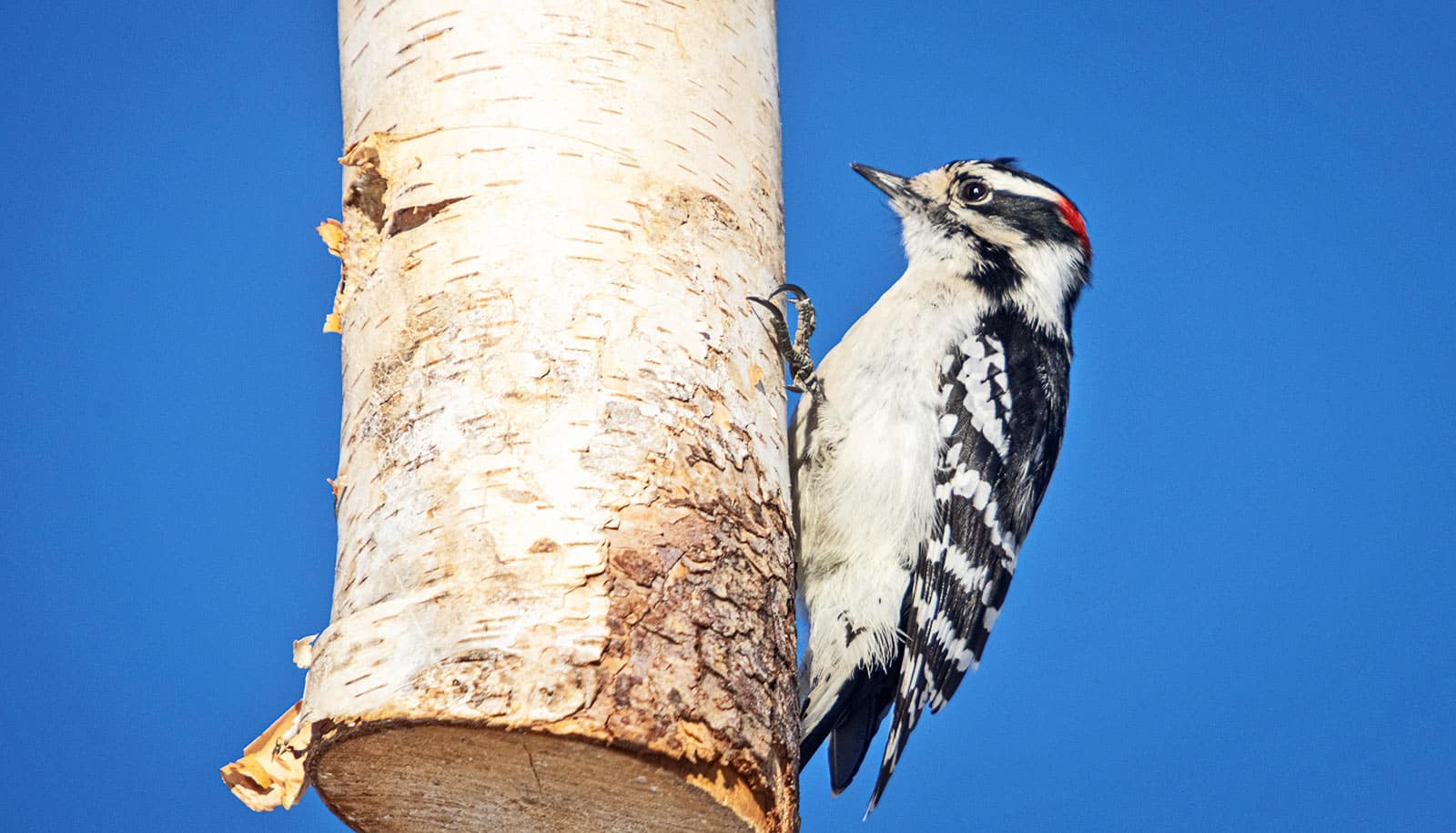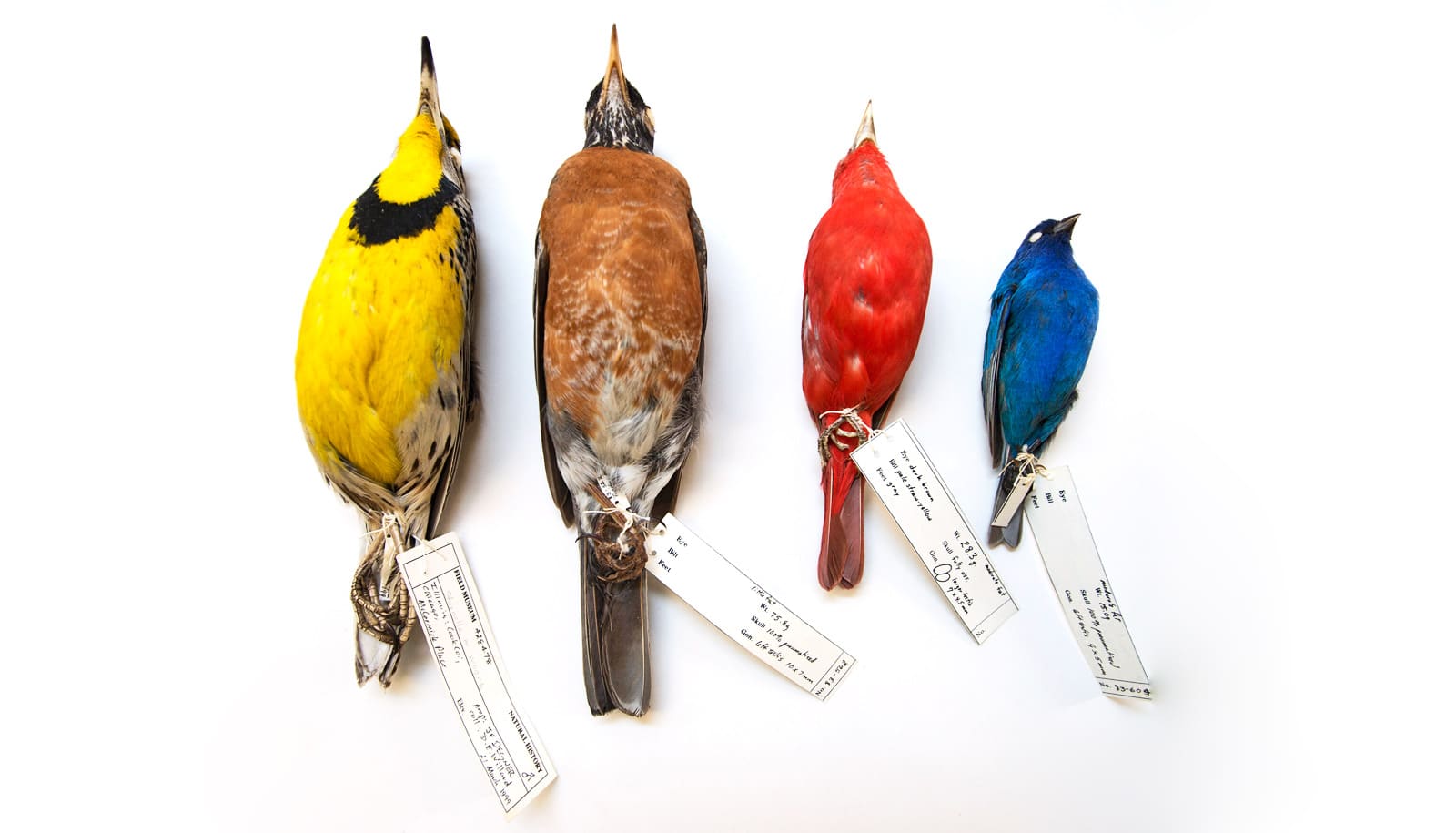New research digs into how tiny woodpeckers deliver devastating strikes to drill into wood.
It’s one of nature’s mysteries: How can woodpeckers, the smallest of which weigh less than an ounce, drill permanent holes into massive trees using only their tiny heads?
The new research shows that there’s much more at play, anatomically: When a woodpecker bores into wood, it uses not only its head but its entire body, as well as its breathing.
In a study in the Journal of Experimental Biology, a team led by biologists at Brown University reveals how woodpeckers combine breathing and whole-body coordination to drill into trees with extraordinary force.
“These findings expand our understanding of the links between respiration, muscle physiology, and behavior to perform extreme motor feats and meet ecological challenges,” says lead author Nicholas Antonson, a postdoctoral research fellow in ecology, evolution, and organismal biology at Brown.
The team studied downy woodpeckers, the smallest species of woodpeckers in North America, which populate forested areas throughout the United States and Canada. Most scientists who investigate woodpecker physiology focus on neck muscles, says study coauthor Matthew Fuxjager, a professor of ecology, evolution, and organismal biology at Brown who has been studying woodpeckers for over a decade.
“We’re left to wonder, where does all the power come from?” Fuxjager says. “Where does the protection come from? Those questions stimulated our study, which took a more whole-body approach.”
In experiments conducted in Fuxjager’s lab, the scientists offered woodpecker study subjects some of their favorite types of wood and then measured the muscles the birds employed while drilling. The team used high-speed video to observe frame-by-frame, every 4 milliseconds, how the birds’ head positioning coordinated with activation of various muscles. They also measured air pressure and airflow in the birds’ airways.
After the woodpeckers were released back into the wilds of Rhode Island, the researchers analyzed the data and made several discoveries. First, they concluded that woodpeckers don’t just use their neck muscles to strike.
“They recruit muscles across the head, neck, hips, abdomen, and tail,” Antonson says, “essentially using their entire body to forge a coordinated hammer, with the neck stiffening on contact in a similar manner to how human wrists do when swinging a hammer.”
With each full-body hammer strike, Antonson says that woodpeckers actively exhale, similar to how professional tennis players grunt while hitting a powerful backhand.
During rapid tapping, the woodpeckers take “mini-breaths” between strikes. These mini-breaths have previously been described in songbirds during fast trills, Antonson says, but this is the first evidence of a bird using them in non-vocal communication.
The researchers found that the woodpeckers strike with forces up to 20 to 30 times their body weight, synchronizing each peck with a breath at rates up to 13 breaths per second.
Taken together, the results can change how people think about how woodpeckers, and animals in general, use physical displays to communicate, Fuxjager says.
“These displays that involve moving the body, either as a dance, or as a gesture, or even as a vocalization, are a way to convey information to another individual or group,” Fuxjager says.
“In the case of woodpeckers pecking, they aren’t just doing a simple thing at an extraordinary speed. They are coordinating all the muscles of their body and their respiratory system to allow them to perform an impressive feat. More than speed, it’s a matter of extraordinary skill.”
The same could be says about humans, Antonson adds.
“When you’re watching someone perform on American Idol, and you’re making judgments on whether they’re a good singer or a bad singer, you’re unconsciously assessing their vocal motor skills, and how they, too, can coordinate their body movement and their breathing to produce a physical display.”
Support for the study came from the National Science Foundation.
Source: Brown University



